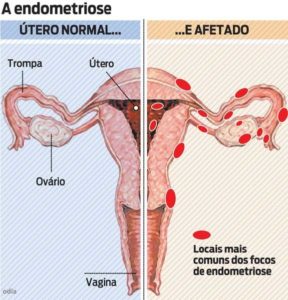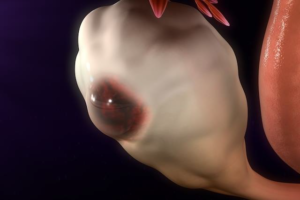Endometriosis is a very well-known condition among women due to the intense pain it causes, but little is known about its other symptoms, how it occurs, why it causes such severe pain, and which treatments are most appropriate.
What is Endometriosis?
Before we explain what endometriosis is, let’s talk a little about the female reproductive system. During the menstrual cycle, the female body prepares itself at each stage to complete the cycle, and during these changes the endometrium (the tissue that develops on the inside of the uterus) thickens to welcome an embryo.However, when fertilization does not occur, the egg is eliminated alongside the endometrium through menstruation. But during this process, there may be an abnormal growth of endometrial tissue, which spreads and can even affect areas outside the uterus.The growth of the endometrium in places such as the bladder, rectum, ovaries, and even the intestine can cause severe abdominal pain, as well as heavy bleeding and, in more serious cases, infertility.
Causes of Endometriosis
Endometriosis is thought to be a hereditary condition, and women from various generations in a family may suffer from it. Even though it is a condition usually diagnosed between ages 25 and 35, studies show that endometriosis can begin soon after menarche (the first menstruation).However, there are other possible causes of endometriosis, such as immune system deficiency. In these cases, the immune system is unable to recognize endometrial growths in abnormal locations, which allows for their rapid development.Another cause cited by doctors is that after some surgical procedures, endometriosis may develop, such as even after a cesarean section. This can occur when some endometrial cells come into contact with the surgical incision site, becoming lodged and developing in incorrect locations.Women with retrograde menstruation have also shown occurrences of endometriosis. Since menstrual blood contains endometrial cells, a kind of “reflux” into the pelvic cavity can cause these displaced cells to settle in inappropriate places, such as the pelvic walls or outside the uterus.
Symptoms of Endometriosis
The main symptom of endometriosis, well known among women, is intense abdominal pain, always associated with menstrual cramps, but much more severe during the menstrual period.
- Dysmenorrhea (pain during menstruation);
- Severe pain during penetration in sexual intercourse;
- Diarrhea;
- Severe cramps up to two weeks before menstruation;
- Severe pain when urinating and during bowel movements.
Very heavy menstrual flow, excessive tiredness and fatigue during menstruation, and difficulty getting pregnant are other symptoms of endometriosis.The intensity of the symptoms is not related to the severity of the condition. Some women with severe endometriosis may not experience any symptoms at all. On the other hand, others with early stages of endometriosis may have extremely strong pain.Symptom fluctuation is also common; pain may not occur every month, which can make diagnosis even more challenging. The symptoms can easily be confused with those of other diseases, so it is crucial to consult your gynecologist if you suspect endometriosis.
Diagnosis of Endometriosis
Endometriosis cannot be diagnosed based on symptoms alone, since, as we have described above, the symptoms are easily confused with other health problems. However, the symptoms can raise a suspicion for the gynecologist, who will then request appropriate tests to investigate the cause.The recommended tests are:
- Ultrasound – Through ultrasound images, it is not possible to confirm the presence of endometriosis, but it is possible to check for specific cysts that may indicate endometriosis;
- Physical examination – Through both vaginal and rectal exams, it is possible to detect abnormalities in the area;
- Magnetic Resonance Imaging – This test can confirm the presence of endometriosis, from cysts to deep endometriosis. The exam allows a full mapping of the pelvis and detection of lesions.
In extremely rare cases where tests are not sufficient to confirm endometriosis, laparoscopy is recommended for diagnosis. In fact, the procedure of laparoscopy is recommended to treat the problem, as a small abdominal incision allows the doctor to search for endometriosis cysts and remove them immediately.
Treatment of Endometriosis
As we already know, endometriosis causes severe pain in women, but since symptoms and their intensity may vary from woman to woman, treatment may also differ for each individual.The entire condition should be evaluated, together with tests ordered by the gynecologist, to find the best treatment and resolve the issue or at least manage the severe pain until the best solution or treatment is found. Endometriosis cannot be cured, but it can be controlled with proper treatments.Normally, medications are prescribed to control pain and to reduce the disease’s progression. Besides analgesics and anti-inflammatories, continuous-use contraceptives may be prescribed to stop the menstrual cycle, producing an effect similar to that of pregnancy and keeping endometriosis under control.This treatment tends to yield good results in controlling pain, but it can cause side effects such as weight gain, nausea, and hormonal imbalances. It is important to note that it does not treat any existing adhesions; it only manages the discomfort caused by the disease.Another type of endometriosis treatment is the use of GnRH hormone-based medications, which block the production of estrogen by the ovaries. This treatment usually lasts from 6 months to a year.Because it is such an intense treatment, it can cause strong side effects, such as early bone calcium loss and symptoms of early menopause, like excessive heat, vaginal dryness, and mood changes.If medications are ineffective or the case of endometriosis is advanced, surgical treatment may be indicated. Laparoscopic surgery is used to treat affected areas, removing all endometriosis sites and endometrial cysts, and even removing residues from some organs if present, such as the bladder and intestine.In extreme cases where other treatments have not worked, a hysterectomy (removal of the uterus, ovaries, and fallopian tubes) may be considered. Before this decision, it is always considered whether the woman already has children.
Types of Endometriosis
When we talk about endometriosis, we tend to think of it as a single condition that can be classified as mild or severe. But in reality, there are several types of endometriosis, and each deserves special or different attention.Superficial Endometriosis – The most common type, superficial endometriosis is when the adhesions affect pelvic areas and the abdominal cavity.Ovarian Endometriosis – Also known as endometrioma, this is when the adhesions affect the ovaries, causing heavy menstrual flow, intense pelvic pain, and pain during intercourse.Abdominal Wall Endometriosis – This type of endometriosis affects the internal areas of the abdomen, such as around the navel. It tends to cause severe abdominal pain during the menstrual period, making it easier to detect through imaging tests at that time.Deep Endometriosis – Deep endometriosis is classified as such when the adhesions affect areas greater than 5 millimeters, possibly even affecting both the vaginal and rectal areas. In this case, only surgical intervention can solve the problem.
Endometriosis and Fertility
When it comes to endometriosis and fertility, it’s a cause for concern since endometriosis is currently considered the main cause of female infertility. However, thanks to advances in medicine, the proposed treatments have shown great effectiveness in this area.In fact, endometriosis only causes irreversible infertility if the disease is discovered very late, and the fallopian tubes are already affected, as well as in cases where immune and hormonal changes have made pregnancy more difficult.If you have discovered the disease early on, follow the treatments indicated by your gynecologist and talk about your desire to get pregnant. Some procedures such as laparoscopy can help women who wish to conceive naturally, since it removes adhesions and prepares the woman’s body for pregnancy.However, there is an average period of 12 months for pregnancy to happen naturally before adhesions may once again become an obstacle. In these cases, in vitro fertilization is recommended to fulfill the wish to become a mother.If you suspect endometriosis due to symptoms you have noticed during your menstrual cycle, talk to your gynecologist. Do not wait for confirmation only when the pain becomes unbearable. The sooner it is discovered, the more successful the treatment will be.













